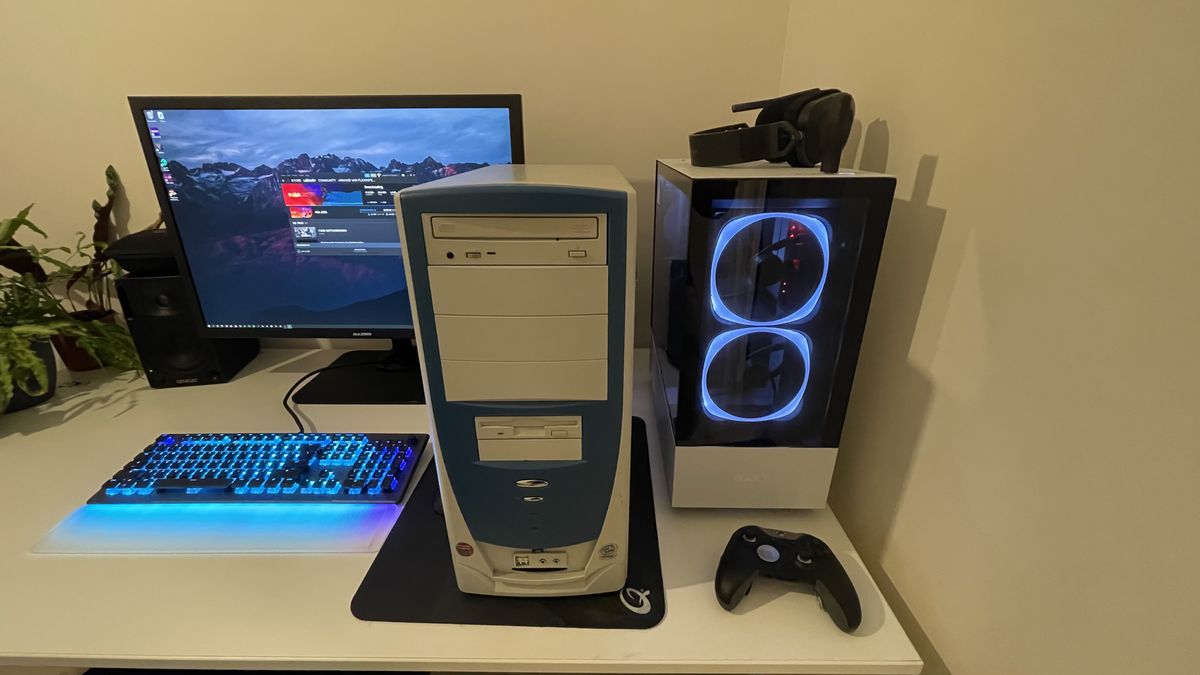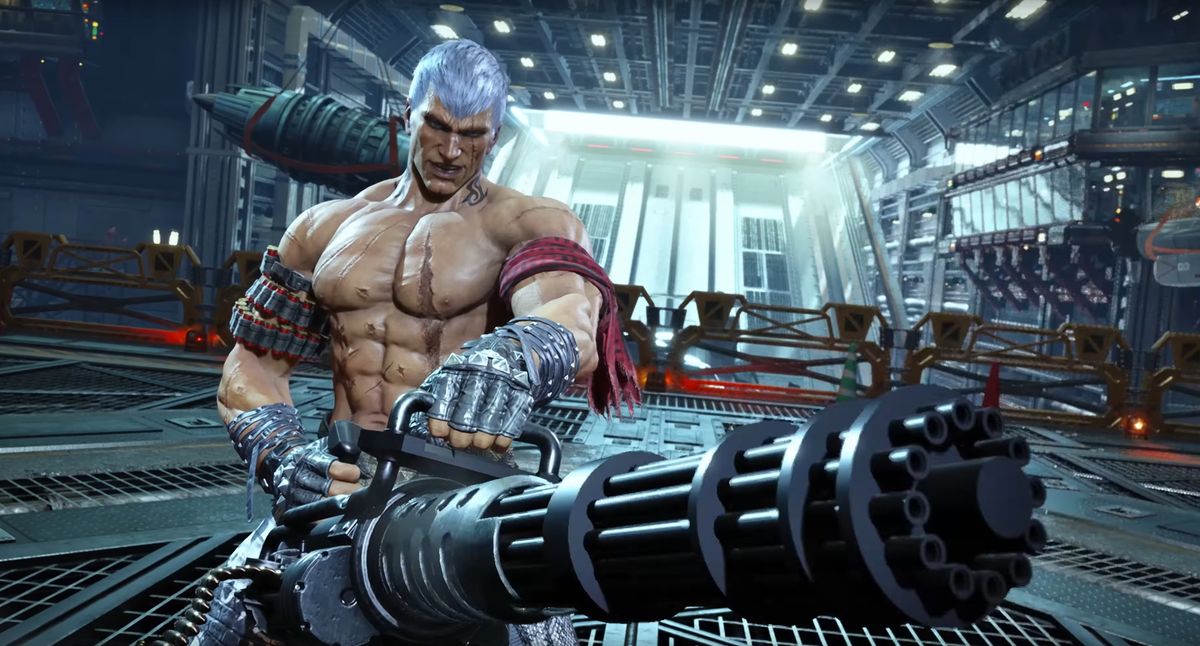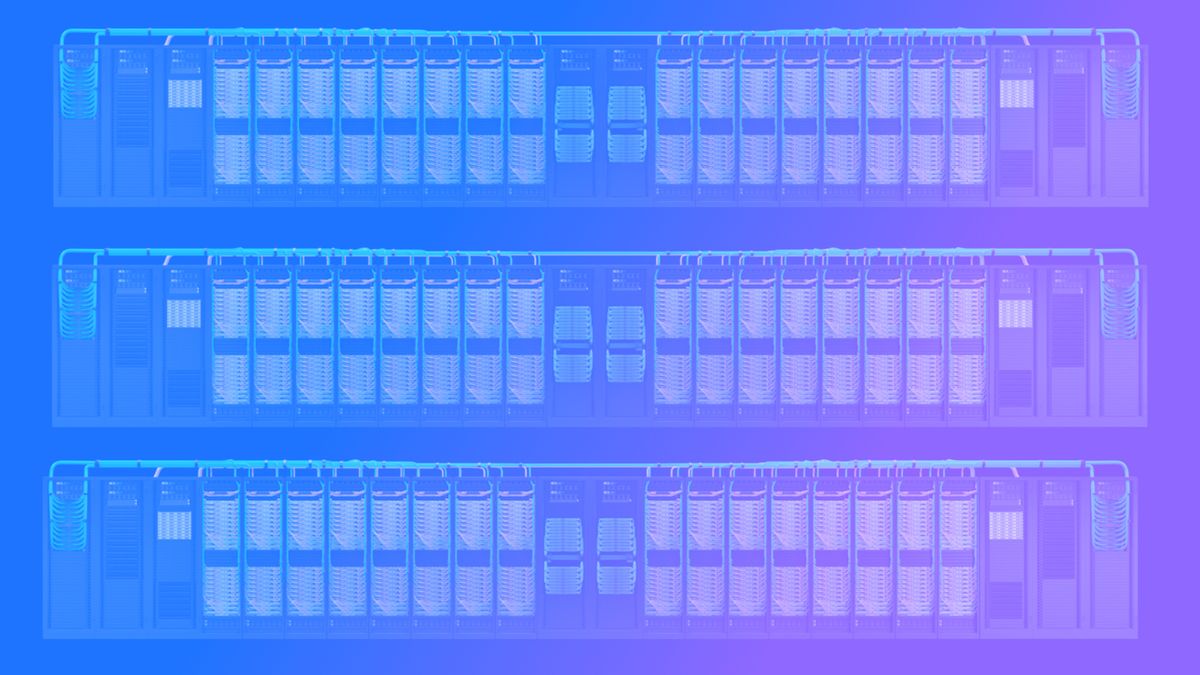There’s an inevitable metamorphosis that takes place inside every PC gamer. We spend the first few years of our RGB- infused passion chasing the new, and then… well, we continue doing that for as long as the likes of Nvidia, AMD and Intel tell us to. But we also start to chase the old, too.
We hoard our old gear without a clear plan, and start to fetishise old beige wonders from bygone eras. And we’re absolutely right to: old gaming PCs are incredible.
Getting these old rigs operational again isn’t as easy as plugging them in and covering your nose while the exhaust fans disperse 17 years of dead skin across the room. Depending on the Windows version that’s installed on that creaking HDD, the panel and peripherals you’ll be hooking it up to, and the format of games you want to play, you’ve got a few separate workflows ahead of you.
For the oldest machines—Windows XP era and older—it’s crucial to give everything inside the case a deep clean. And not just for the aforementioned scattering of dead cells—finding NOS [new old stock] parts for these PCs is really tough, and finding NOS parts that are actually compatible with your machine is roughly as complex as just soldering a new motherboard by hand. In other words: you’re going to want every fan and capacitor to last as long as possible.
The best way to do this is to take a couple of cans of compressed air to the case interior, while the motherboard and all components are still installed inside it. Once most of the dust and detritus are gone, it’s worth pulling out the mobo and giving each individual fan some attention with a cotton bud. The less dust they have on their blades, the quieter they’ll run and the longer they’ll last.
With the motherboard out of the case, now’s a good opportunity to give it a deep clean with some isopropyl alcohol and a clean cloth or cotton bud. Don’t worry—it’s safe, and it won’t leave a residue. It’s especially good at cutting through dusty build-up, and from an aesthetics standpoint you can’t beat the shine it leaves on a PCB.
It’s ready to rebuild and power on now, but there are some important considerations at software level. Firstly: don’t try to connect a Win98 machine or older to the internet. Aside from the life-shortening faff of it all, the security risks are considerable, since Microsoft stopped supporting those OSes with security fixes decades ago.
Instead, you’ll need to load software onto your machine via CDs if you have a burner installed on a more recent rig. You can also install a generic driver for USB flash drives, but of course you’ll need to deliver that driver onto your old OS via a CD in the first instance.
With basic drivers installed via CD or USB drive for your graphics card and any peripherals like joysticks, all you need to worry about now is installing the games. ISO files are available on abandonware sites, but the legality here isn’t clear cut—and besides, nothing beats the nostalgia of getting a big box copy of a 1990s game through the post. If your machine’s about preserving a moment in videogaming past, why not extend that to the game collection you’re playing on it too?
Onto more recent machines. Your old Crysis system, running the finest Vista that 2007 had to offer. The Windows 7 rig that isn’t quite old enough to be retro yet, but might one day become so. Unfortunately, the security concerns remain here—it’s unwise to connect these machines to the internet, and since you’ll probably want to play games from your Steam collection on them that presents a hurdle. If you can live with the temporal dissonance, installing Windows 10 onto these PCs is the easiest fix. Unlike its progeny, its minimum specs are extremely low—a 1GHz CPU, 1GB of RAM and a DX9 GPU—so your Vista machine can probably handle it. Installing a fresh copy of Win10 will clear out all the hard drive silt that’s accumulated over the years, and let you connect to Steam without unleashing cyberattack armageddon into your Wi-Fi network.
And if you’re hellbent on the full nostalgia hit of seeing the original OS in all its Aero glory, consider installing Win10 and then running a VM with the older OS in it. That way, you can download everything you need in Win10 and then head a layer deeper into your PC gaming Inception to play your games offline in VM Vista.
Keeping these old rigs in working order pays dividends. As the industry’s remaster obsession intensifies, there’s a warm, fuzzy feeling to preserving the hardware that the classic games that mattered to us arrived onto. Playing something in situ is an unrivalled thrill—and being able to do so will only become rarer as more machines are scrapped.


